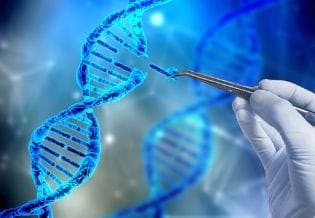Instructions for Authors
Comprehensive guidance for preparing and submitting manuscripts to the Journal of Cancer Genetics and Biomarkers (JCGB).
Publish with Confidence
These instructions ensure your research meets JCGB’s standards for scientific rigor, data transparency, and ethical compliance. Review each section carefully before submitting. If you have questions, email [email protected] for personalised assistance.
Original Research Articles
Comprehensive reports of experimental or computational studies that deliver novel insights into cancer genetics, biomarker development, or translational oncology. Include introduction, methods, results, discussion, and conclusions.
Rapid Communications
Concise manuscripts detailing time-sensitive discoveries, emergent resistance mechanisms, or urgent clinical diagnostics advances. Limited to 3,500 words with up to 4 figures/tables.
Systematic Reviews & Meta-Analyses
State-of-the-art syntheses adhering to PRISMA/MOOSE guidelines. Pre-register protocols when possible (PROSPERO or OSF).
Methods & Protocols
Detailed descriptions of laboratory workflows, computational pipelines, or data integration frameworks enabling reproducibility.
Case Series & Practice Innovations
Real-world implementations of biomarker-guided care, adaptive trial design, or tumour board decision support. Include context, methodology, outcomes, and lessons learned.
Perspectives & Policy Analyses
Thought leadership pieces addressing ethical, regulatory, access, or equity considerations in cancer genomics and precision medicine.
- Language: English. Use professional, clear, and inclusive language.
- Font: 12-point Times New Roman or Arial; double-spaced; 1-inch margins.
- Pagination: Continuous page numbers in the footer; line numbers optional but recommended.
- Word limit: 6,000 for original research (excluding references, tables, figures, supplements); 3,500 for rapid communications.
- File naming: “JCGB_[corresponding author surname]_[short title].docx”.
- Article title (≤30 words) without abbreviations.
- Author names (first name, middle initial, last name) with superscripted affiliations.
- Affiliations with department, institution, city, state/province, country.
- Corresponding author contact: mailing address, phone, ORCID, email.
- Short running title (≤60 characters).
- Disclosures summarising conflicts and funding on title page and main manuscript.
- Structured abstract (≤250 words) with headings: Background, Methods, Results, Conclusion.
- Include absolute numbers, effect sizes, and confidence intervals where applicable.
- List 5–12 keywords from recognised vocabularies (MeSH, Cancer.gov Thesaurus).
- Introduction: Contextualise the scientific gap and objectives. Reference recent JCGB articles when relevant.
- Materials and Methods: Provide enough detail for replication; reference standard protocols; describe data preprocessing, statistical tests, software versions.
- Results: Present findings logically with descriptive text and cross-referenced tables/figures. Highlight biomarker performance metrics and validation steps.
- Discussion: Interpret results, compare to existing literature, recognise limitations, discuss translational implications, and outline future work.
- Conclusion: Summarise key takeaways and clinical or research significance.
- Use Vancouver style. Number references sequentially as they appear.
- Include DOI or PMID where available.
- Example formats:
- Journal: Smith AB, Nguyen T, Patel R, et al. Genomic predictors of immunotherapy response in melanoma. J Cancer Genet Biomark. 2024;18(2):145-159. doi:10.14302/issn.2575-3030.jcgb-24-1002.
- Book: Brown C. Translational Genomics in Oncology. 3rd ed. Springer; 2023.
- Dataset: Lee S, Gomez L. Multi-omic atlas of triple-negative breast cancer. Gene Expression Omnibus. 2023. GSE198765.
Figures
Submit separate files in TIFF/PNG (≥300 dpi) or vector formats (AI/EPS). Provide descriptive captions, legends, and symbols. For multi-panel figures, label sub-panels (A, B, C) consistently.
Tables
Create editable tables in Word or Excel. Avoid images of tables. Use concise titles and footnotes to define abbreviations.
Supplementary Material
Include extended data, methodological appendices, checklists, raw data summaries, and interactive dashboards. Cite supplements in the main text.
JCGB champions reproducibility. Provide clear statements under the heading “Data Availability”. Examples:
- “Sequencing data are available in the European Genome-phenome Archive under accession EGAS00001007854.”
- “Code for survival modelling is available at https://github.com/JCGB-lab/biomarker-model under MIT license.”
- “Due to patient privacy, de-identified clinical data are accessible upon reasonable request to the corresponding author with institutional approval.”
- Human studies: Include IRB approval number, consent procedures, and compliance with the Declaration of Helsinki.
- Animal studies: Cite IACUC approval, ARRIVE guidelines adherence, and animal welfare measures.
- Genomic data governance: Describe adherence to data sovereignty or indigenous genomic consent frameworks when relevant.
- Clinical trials: Provide registry identifiers (ClinicalTrials.gov, WHO ICTRP).
- Conflicts of interest: Use the ICMJE disclosure form. Upload under “Conflicts” in ManuscriptZone.
Submit a concise cover letter (≤500 words) summarising:
- Manuscript title and type.
- Novel contributions and relevance to JCGB audience.
- Highlights of validation, datasets, or translational value.
- Confirmation of exclusive submission (not under review elsewhere).
- Suggested reviewers (3–5) with affiliations and emails; optionally indicate non-preferred reviewers with justification.
- Respond point-by-point to reviewer comments in a separate document.
- Highlight manuscript changes via track changes or coloured text.
- Provide additional analyses or datasets requested if feasible; justify omissions respectfully.
- Maintain anonymity when double-blind review is requested.
| Stage | Description | Author Action |
|---|---|---|
| Production Intake | JCGB production team finalises metadata, keywords, and funding acknowledgments. | Confirm accuracy of author names, affiliations, and ORCID IDs. |
| Copyediting | Language, grammar, and style edits to ensure clarity and consistency. | Review tracked changes; accept or comment within two business days. |
| Proofing | Typeset PDF and HTML proofs shared for final review. | Return corrections within 48 hours; verify figures and references. |
| Publication | Article assigned DOI and published open access on JCGB website. | Share promotional toolkit; coordinate with institutional communications. |
- JCGB APC: $2,199 USD, invoiced upon acceptance.
- Waivers up to 25% via the Waiver Program 2025.
- Membership plans offer bundled APC credits: see JCGB Membership.
- Include billing contact and purchase order requirements during submission to avoid delays.
Early-Career Mentorship
Request pairing with senior reviewers or editors to receive constructive guidance during revision. Mention in your cover letter if this support would be valuable.
Translation & Accessibility
JCGB offers plain-language summary templates and infographic support to help you communicate with patients, funders, and policymakers.
Conference Alignment
Planning to unveil results at a conference? Coordinate embargo timing with JCGB to maximise visibility and comply with meeting policies.
If your manuscript targets an active special issue:
- Note the special issue title in the submission form and cover letter.
- Review the dedicated guidance on the Submit to Special Issue page.
- Expect guest editor involvement in review and thematic positioning.
Can I submit a preprint?
Yes. JCGB supports responsible preprinting. Cite your preprint in the cover letter and manuscript reference list.
What if my data are sensitive?
Provide controlled-access details, data use agreements, or privacy frameworks. JCGB supports secure data enclaves and privacy-preserving analytics.
Do you accept negative or replication studies?
Yes—especially when they clarify biomarker utility, detect assay limitations, or inform clinical implementation.
How do I request double-blind review?
Upload an anonymised manuscript and indicate the request in your cover letter. JCGB will coordinate accordingly.
Editorial Policies
Familiarise yourself with peer review, corrections, and ethics guidelines.
Read PoliciesReady to Submit?
Once your manuscript meets these instructions, proceed to the JCGB submission portal. Our editorial team is here to support you from submission to publication.
Last updated: September 2025. JCGB periodically revises these instructions to reflect evolving best practices in cancer genomics publishing.
PubMed Indexed Articles
Differences in the alveolar macrophage proteome in transgenic mice expressing human SP-A1 and SP-A2.
Pubmed ID: 24729982Determination of the Proteomic Response to Lapatinib Treatment using a comprehensive and reproducible ion-current-based proteomics strategy
Pubmed ID: 29046878COLLAGE 360: A Model of Person-Centered Care To Promote Health Among Older Adults
Pubmed ID: 28989995Collaborated Universities
- Rivers State University
- Azuonwu Obioma, Somba Nyenwere
- Investigation of Antimicrobial Activity of the Extracts of the Leaves, Stembark and Root of Allanblackia floribunda: An Alternative Paradigm Shift Outcome.
- Liaquat University of Medical and Health Sciences Jamshoro
- Ashique Ali Arain, Syed Muhammad Ali, Madiha Shah
- Vitamin -D Deficiency: A Clinical Problem Searching For Solution.
Latest Article
Other Relevant journals
Brain And Spinal Cancer
ISSN : 2576-182XA brain tumor is an abnormal growth of tissue in the brain or central spine that can disrupt proper brain function. Doct...
Breast Cancer Survival
Breast cancer is the most common invasive cancer in females worldwide. It accounts for 16% of all female cancers and 22....
Lung Cancer Epidemiology
Lung cancer is uncontrolled growth of abnormal cells that start off in one or both lungs; usually in the cells that line...
Thyroid Cancer
ISSN : 2574-4496Most nodules are cysts filled with fluid or with a stored form of thyroid hormone called colloid. Solid nodules have lit...


